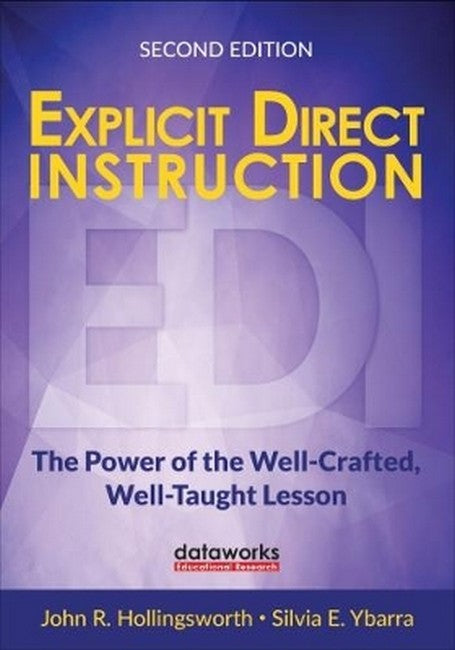Explicit Direct Instruction (EDI) 2/e
Explicit Direct Instruction (EDI) 2/e
SKU:9781506337517
Share
The researchers and trainers at DataWORKS have a vision for all classrooms: All students successfully taught grade level work every day. Explicit Direct Instruction (EDI) is the book that shows teachers exactly how to do that. EDI is based on educational theory, brain research, and data analysis of more than 2 million assignments from 48,000 teachers, 25,000 classroom observations, and surveys of more than half a million educational stakeholders. Presented in book form here for the first time, authors Hollingsworth and Ybarra give teachers and instructional planners a step-by-step implementation guide to EDI. Written in an entertaining, teacher friendly, easy to read style with classroom examples, boxed features, and detailed sample lessons, the book covers checking for understanding, lesson objectives, activating prior knowledge, concept and skills development, guided practice, and much more. EDI is appropriate for ALL learners in inclusive and diverse classrooms. It has demonstrated very high success rates, and teachers who use EDI discover that it puts the fun back in teaching when it enables their students to say "I can do it."
About the Author
About the Author
Couldn't load pickup availability


